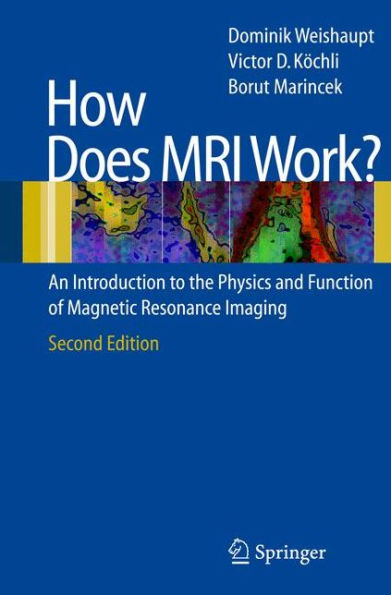How does MRI work?: An Introduction to the Physics and Function of Magnetic Resonance Imaging
It is with great pleasure that we present this completely revised English e- tion of our book How Does MRI Work? An Introduction to the Physics and Function of Magnetic Resonance Imaging only two years afer publication of the frst English edition. We are particularly pleased that our introductory textbook met with great approval in the English-speaking world and not just in the German-speaking countries. Tis success has been an enormous - centive for us to further improve and update the text. For this reason, we are now presenting a second edition. All chapters have been thoroughly revised and updated to include the latest developments in the ever-changing feld of MRI technology. In particular, the chapter on cardiovascular imaging has been improved and expanded. We gratefully acknowledge the contribution of Daniel Nanz, PhD, the author of this chapter. Moreover, two completely new chapters have been added: “Fat Suppression Techniques” and “High- Field Clinical MR Imaging”. Notwithstanding these additions, the intended readership of our book remains the same: it is not a book for MR specialists or MR physicists but for our students, residents, and technologists, in short, all those who are interested in MRI and are looking for an easy-to-understand introduction to the technical basis of this imaging modality at the beginning of their MRI training. Te second English edition presented here corresponds to and appears together with the completely revised ffh German edition.
1114039605
How does MRI work?: An Introduction to the Physics and Function of Magnetic Resonance Imaging
It is with great pleasure that we present this completely revised English e- tion of our book How Does MRI Work? An Introduction to the Physics and Function of Magnetic Resonance Imaging only two years afer publication of the frst English edition. We are particularly pleased that our introductory textbook met with great approval in the English-speaking world and not just in the German-speaking countries. Tis success has been an enormous - centive for us to further improve and update the text. For this reason, we are now presenting a second edition. All chapters have been thoroughly revised and updated to include the latest developments in the ever-changing feld of MRI technology. In particular, the chapter on cardiovascular imaging has been improved and expanded. We gratefully acknowledge the contribution of Daniel Nanz, PhD, the author of this chapter. Moreover, two completely new chapters have been added: “Fat Suppression Techniques” and “High- Field Clinical MR Imaging”. Notwithstanding these additions, the intended readership of our book remains the same: it is not a book for MR specialists or MR physicists but for our students, residents, and technologists, in short, all those who are interested in MRI and are looking for an easy-to-understand introduction to the technical basis of this imaging modality at the beginning of their MRI training. Te second English edition presented here corresponds to and appears together with the completely revised ffh German edition.
79.99
In Stock
5
1

How does MRI work?: An Introduction to the Physics and Function of Magnetic Resonance Imaging
170
How does MRI work?: An Introduction to the Physics and Function of Magnetic Resonance Imaging
170Paperback(2nd ed. 2006)
$79.99
79.99
In Stock

Product Details
| ISBN-13: | 9783540300670 |
|---|---|
| Publisher: | Springer Berlin Heidelberg |
| Publication date: | 08/29/2006 |
| Edition description: | 2nd ed. 2006 |
| Pages: | 170 |
| Product dimensions: | 6.10(w) x 9.25(h) x 0.02(d) |
From the B&N Reads Blog
